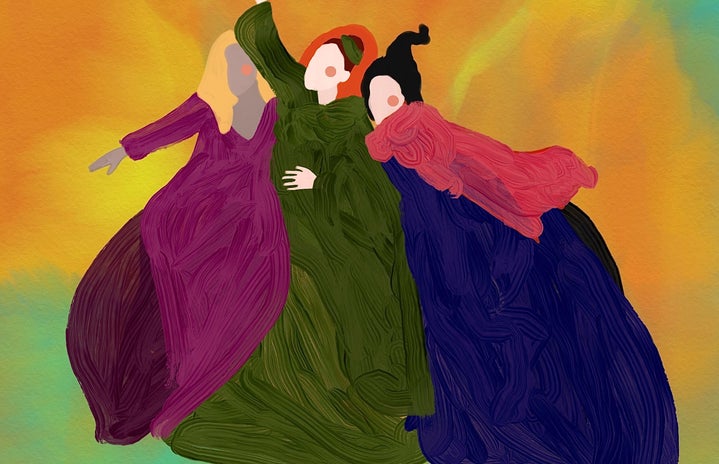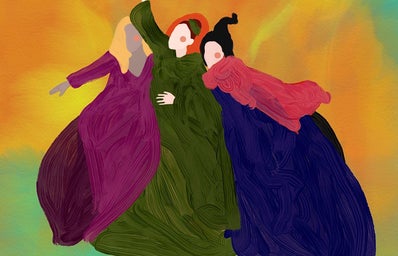The witching season is upon us. Lighting half melted candles, drunkenly putting a hex on your ex and re-watching your favourite Halloween films is the best way to kick off the spooky season (okay maybe the hex is a little too far). Old cult films during the Halloween season have a certain allure to them. As I began my annual screening of Halloweentown, I couldn’t help but notice there being a lot of witch films on my movie list. I find myself falling into a spell of transforming my entire personal aesthetic to match these powerful women with immaculate style who fight evil and sometimes cause a little trouble. This witches style––in an overly analytical sense––portrays a deeper meaning of femininity and power that inspires us from an early age.
You were probably first introduced to flying broomsticks, pointy black hats, long striped stockings and sleek green fingers from the 1939 film The Wizards of Oz. It was the first to feature representation of witches in popular culture that would set the witchcore uniform for many Halloweens to come. Or maybe it was the Sarah Sanderson sister from 1993’s Hocus Pocus, clad in brilliant gowns and tight corsets, sucking the lives out of Salem’s children. Besides the Wicked Witch of the West and Sarah Sanderson, witch films continue to be on a high strike of reinventing new aesthetics.
One of the most significant cult films of all time is the 1996 teen horror film The Craft. Following a coven of outcasted girls, they practice the art of magic for their own gain. Dressed in leather, cross necklaces, chains and fishnet stockings, this film introduced a new generation for the goth girl aesthetic. Costume designer Deborah Everton’s main goal was to make the costumes accessible for teen girls and was inspired by Paris theatre kids, ultimately creating the cult fashion that defined The Craft. Their clothing reflects an expression of embracing their weirdness, while battling with peer pressure, sex, low self-esteem and responsibility––all major themes in this film.
Nicole Kidman introduced us to Gillian, the cool cigarette smoking sultry witch with body chains and silk miniskirts who ultimately falls in love with who she describes as a Dracula cowboy (I can’t be the only one who had a swooning crush on him). Sandra Bullock’s Sally gave us the ‘girl next door’ as she was sporting mom jeans and calf-high boots. These opposite sister duos came together to battle Gillian’s ex vampire-face boyfriend who *spoiler* haunts them from the dead.
Speaking of the dead and cool sultry witches, Elaine from The Love Witch is the modern definition of this. If you haven’t seen this film, you will become obsessed with the set design as it evokes a trippy fairy-tale with a super campy feminist that is a love fable set in the twenty-first century in the style of the 1960s. Dressed in poppy pinks and black sheer robes, the beautiful young witch spends her days in her gothic Victorian-meets-hippie apartment, creating potions to seduce men. Her spells are more potent than she imagines, causing a slew of unfortunate victims to fall hopelessly in love with her until they go mad.
The deeper I investigated the real witchcore, the more I realized that these were all Hollywood’s charming depictions of the witch aesthetic. The real witch costume all comes down to human basics: nudity. I was surprised to learn that in the early days, witches would practice their religion while naked. One of the only horror films to capture this element was A24’S chilling raw film The Witch, featuring Anya Taylor-Joy who danced around a burning fire naked
Whether your style has been inspired by these films, or you stand by the authentic modern witch, you can’t deny the power a good outfit emits. These witchcore uniforms represent decades of women in film who convey strong, powerful and feminine personas and get their hands tangled in sticky situations, either for bad or good.


